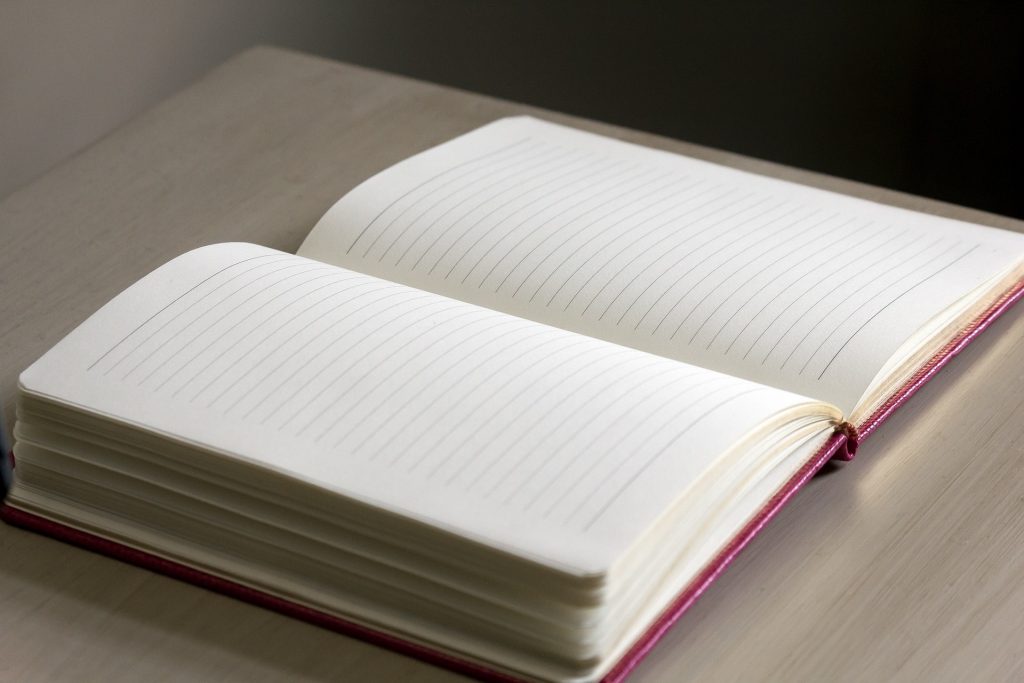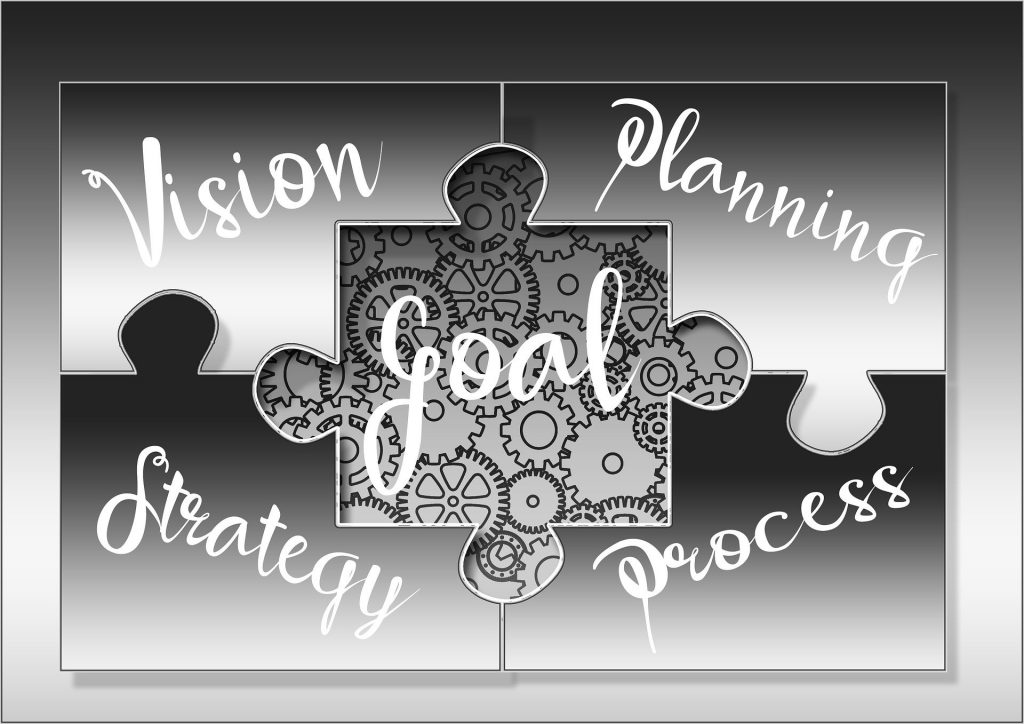-
Journaling in the FYC Classroom

Journaling in FYC Classrooms How can I integrate the process of journaling into an English composition course?
The time has arrived — the moment I begin devising my first-year composition course design to include the syllabus, daily assignments (low stakes writing), and essays (high stakes writing). Over the past seven months, my peers and I have been immersed in pedagogical and practical application theory. From these areas of study, I have identified an area of focus that I would like to implement into my coursework model: journaling. Specifically, my interest in journaling comes from my desire to teach writing as a process, also known as contemplative writing (Miller and Kinane 2), and not just a product. The structural design of contemplative writing provides “. . . a way to explore and encourage the integration of mind, heart, and body in the process of learning” (Miller and Kinane 2).
Holistically, my work at the Kennesaw State University writing center has privileged me to witness how first-year composition students approach their assignments academically as well as emotionally. While students span the spectrums of confidence levels and perceived preparation, I have observed various phases of anxiety, stress, and lack of self-confidence when it comes to completing English 1101 and 1102 essays. Many times, through the course of just discussing the assignment guidelines in great detail, I find students tend to not only relax, but they also tend to get excited about their task at hand; students want to learn but need help navigating, analyzing, and interpreting their assignment guidelines. As a tutor, this signals to me that students want to engage in writing but may be apprehensive about how best to proceed — leading me to become a proponent of process-based pedagogy.

Start with self . . . In the quest to identify ways of helping my future students based upon an in-depth analysis of pedagogical research, I decided to start with myself. To be fair, I must disclose that I love to write; I love everything about it from freewriting, brainstorming, drafting, revision, to the final product. However, I have noticed that while all writers have more learn, a notion I learned from Naming What We Know (Rose 59-61), there is a distinct process that I utilize. This personal process almost always begins with focused freewriting. Interestingly enough, I had no idea there was a term for the process prior to my research. When some of the students that I tutor in the writing center are feeling overwhelmed, or experiencing an unclear sense of direction, I have them pull out a pencil/pen and paper. I then ask students to focus freewrite for a few moments. We take a key term associated with their writing assignment, and I have them write down anything and everything they can think of to get the mind actively engaged with the topic. Most of the time, that’s all it takes! By referring to keywords and phrases, students are then able to begin the brainstorming and/or outlining process. In other words, they go from ideas to creating a map of where their essay or project will continue to develop. Unverzagt (28) further describes this process that I have personally experienced with students: “Disordered and confused as freewriting may be, the aftermath of such explosive expression can be surprising and beneficial. After the students happen upon their thoughts in the ‘discovery draft,’ they can begin to process their sentences and impose a structure upon their writing, reshaping the mass of freewriting into a coherent form.”

Literary Research Research/Literary Analysis
Wanting to incorporate all of these first-hand experiences in conjunction with sound pedagogical theory, I began exploring scholarly research to ascertain the best practices of integrating journaling as a freewriting/focused application into the first-year composition classroom. Explicitly, the question I set out to answer for my course design is:
How can I integrate the process of journaling into an English composition course?
In the words of Socrates, “The unexamined life is not worth living” (qtd. in Stevens and Cooper 3). Stevens and Cooper discuss commonalities in the lives of those in higher education and argue, “If Socrates’ words echo anywhere, it should be in the academy — where the central goal is the creation of a thoughtful, educated society” (3). This concept leads to the discussion of journaling. First, for clarity, let’s define what a journal encompasses: “. . . sequential, dated chronicle of events and ideas, which includes the personal responses and reflections of the writer (or writers) on those events and ideas” (Stevens and Cooper 5). Boyd and Fales, 1983, defined reflection as “a complex and intentional intellectual activity that generates learning from experience” (qtd. in Stevens and Cooper 19), while Yancey defines reflection as “a process by which we know what we have accomplished and by which, we articulate accomplished products of these processes” (qtd. in Lauer 135). Similarly, Lauer suggests the purpose of writing “. . . as a process of inquiry is to seek insights and new understandings” (135), and D. Godron Rohman suggests, “. . . the journal, as a genre, allows students to access and actualize their true selves” (qtd. in Bawarshi 103). Also entering the academic debate, Reynolds suggests, “freewriting has been considered the ‘healthy habit’ of getting in touch with the unconscious layer of the mind and steering clear of writer’s block” (qtd. in Unverzagt 28). For all of these reasons collectively, there is strong evidential support of introducing first-year composition students to the art and skill of journaling.

Freewriting and Reflection . . . The research has and continues to show that reflection is vital to teaching writing as a process. Journaling is not only a form of free/focused freewriting, but it also can be utilized as a form of reflection in the process of composition writing; “as the term implies, this writing is like a mirror, giving you an opportunity to look at your developing self” (“Journals and Reflective” 72). The inquiry confirmed there is a place for self-reflection and journal writing within composition classrooms. Student testimonials are found throughout the literature of how students “report that they learn to write more fluently and easily” (qtd. in Stevens and Cooper 17). Ultimately, the goal is for students to consider and understand the rhetorical choices they make while engaged in the process of writing. The more students are able to reflect and identify their choices, the easier the writing will become. The easier writing becomes, the more versatile and adaptable it will become, not only across the curriculum but also in life beyond the classroom.
Developmental psychologists Kegan and Drago-Severson have identified two types of learning, informational and transformational (Stevens and Cooper 37), that we will consider regarding how to best implement journaling effectively. Informational learning “involves the acquisition of skills or knowledge, whereas transformational learning involves critical reflection on one’s assumptions . . .” (qtd. in Stevens and Cooper 37). This theoretical approach to learning reminds me of Charles Bazerman’s statement, “Awareness of rhetorical situation is the beginning of reflection on how we perceive the situation, what more we can understand about it, how we can formulate our goals, and what strategies we may take in our utterances” (36). Employing this theory into practice, I plan to implement daily low-stakes journal writing in my English composition classroom.
According to Stevens and Cooper (49), three basic writing principles support journal writing:
- Writing is thinking.
- Practice builds fluency in writing and the motivation to write.
- Students value journal writing when it is fully integrated into the course objectives and structure.

Idea – Brainstorm – Implement Action Plan
While various methods of journaling are used, Luo, Kiewra, Flanigan, and Peteranetz determined that for text-related learning, longhand composition is more beneficial than typing (qtd. in Portman 3). Students will be asked to purchase a composition notebook of their preference that can be used for daily journaling and bring it to each class meeting. The first page of the journal will function as a title page and include the student’s name, course number, and email address. Page two of the journal will be used as a table of contents (TOC) entry only. This will enable students to keep a working TOC throughout the semester in which they can easily access previous entries by topic or activity. Therefore, page numbers will be added to each page of the journal. Grading for completion will occur weekly and count towards the student’s overall course participation grade. According to Stevens and Cooper, students’ journal writing typically accounts for 10-30% of the final grade, with 20% being the most common (48), which I plan on adhering to and disclosing in my syllabus design. The syllabus will explain the motivation and learning outcomes associated with the use of journaling. Currently, the following course objectives in place for first-year composition will be exemplified by the usage of reflective journaling as many of the outcomes involve analysis, interpretation, practice, and composing:
- Practice writing in situations where print and/or electronic texts are used, examining why and how people choose to write using different technologies.
- Interpret the explicit and implicit arguments of multiple styles of writing from diverse perspectives.
- Practice the social aspects of the writing process by critiquing your own work and the work of your colleagues.
- Analyze how style, audience, social context, and purpose shape your writing in electronic and print spaces.
- Craft diverse types of texts to extend your thinking and writerly voice across styles, audiences, and purposes.

Concept Mapping – Brainstorming – Reflection – Summarizing Integrating journal writing into the course design and objectives will provide greater value from students’ perspectives. Based primarily upon ideas found in the research of Stevens and Cooper (77-105), I plan on incorporating the following types of journaling activities as low-stakes writing opportunities weekly:
- Freewriting – just as it sounds, students will be given opportunities to write about whatever is on their mind. Most of the time, this activity will be incorporated in the first few moments of class. I feel as though it will give students time to shift gears and prepare for the classroom activity or discussion that day.
- Focused Freewriting – similar to freewriting, however, a specific keyword, concept, topic, or idea will be provided for the student to then “freewrite” anything and everything that comes to mind for that particular element. This type of exercise may be useful in helping students identify research paper and essay topics of choice.
- Brainstorming – brainstorming will be used to help students formulate and narrow thesis statements for their essays. It may also be used to identify areas for discussion within essays such as bullet point ideas for body paragraphs.
- Concept mapping – the drawing of bubble diagrams may be helpful to students in lieu of traditional outlining. Some students portray a negative stigma towards traditional outlining as sometimes it induces a negative connotation from prior writing experiences. A bubble diagram will offer a similar blueprint but may be viewed as a more graphic and flexible representation of the essay/idea structure.
- Wordcloud generator – word clouds allow students to merge key point ideas and terms. They may be useful to incorporate vocabulary and critical thinking exercises.
- Metareflection – by reading previous journal entries throughout the course of the semester, students will have the opportunity to learn from what they have written. In other words, they will reflect on their freewriting reflection. This process not only teaches students to identify their rhetorical choices, but it also teaches students that revision and reflection are part of the writing process.
- Summary/Analysis – weekly required student readings will take place from the course textbook. However, research shows as few as 30% of students complete readings before the lecture (Stevens and Cooper 102). To help circumvent this scenario, students will summarize and/or reflect on assigned readings in their composition notebooks.

Writing: A Process of Life-Long Learning In summary, I am thrilled to learn that research in the field of rhetoric and composition supports the use of journaling in the English composition classroom. By providing students exposure to various types of journaling (mentioned above), they will begin to learn and develop their own “go-to” methods of prewriting, writing, revision, and reflection — the core components of the writing process. Replacing negative feelings, stigmas, and preconceived ideas with positive, supportive, and procedural attitudes, skills, and processes will foster a successful integration of writing not only in the academic classroom but in society as a whole.
Works Cited
Altmann, Gerd. Pixabay. 2020, pixabay.com/illustrations/idea-plan-action-success-concept-1855598/.
Altmann, Gerd. Pixabay. 2020, pixabay.com/photos/skills-can-startup-start-up-3371153/.
Bawarshi, Anis S. “Genre and the Invention of the Writer: Reconsidering the Place of Invention in Composition.” Utah State University Digital Commons, 2003, p. 103, digitalcommons.usu.edu/cgi/viewcontent.cgi?article=1140&context=usupress_pubs.
Bazerman, Charles. “Writing Speaks to Situations Through Recognizable Forms.” Naming What We Know: Threshold Concepts of Writing Studies, Classroom Edition, edited by Adler-Kassner, Linda and Elizabeth Wardle, Utah State University Press, 2016, pp. 35-37.
Clark, Hilary. Pixabay. 2020, pixabay.com/photos/journal-desk-wood-notebook-writing-1090599/.
Gellinger, Gerhard. Pixabay. 2020, pixabay.com/photos/books-read-learn-literature-3322275/.
“Journals and Reflective Writing.” WAC Clearinghouse, pp. 72-93. wac.colostate.edu/docs/books/involved/chapter4.pdf. Accessed 18 Feb. 2020.
Keller, Stefan. Pixabay. 2020, pixabay.com/photos/fantasy-eyes-forest-aesthetic-face-2824304/.
Kunze, Ralf. Pixabay. 2020, pixabay.com/photos/balance-meditation-meditate-silent-110850/.
Lauer, Janice M. “Invention in Rhetoric and Composition.” Parlor Press and WAC Clearinghouse, 2004, p. 135, wac.colostate.edu/docs/books/lauer_invention/lauer.pdf.
Miller, Marlowe, and Karoyn Kinane. “Contemplative Writing Across the Disciplines.” WAC Clearinghouse, pp. 1-5, wac.colostate.edu/docs/atd/contemplative/intro.pdf. Accessed 18 Feb. 2020.
Portman, Steve. “Reflective Journaling: A Portal Into the Virtues of Daily Writing.” The Reading Teacher, 2019, pp. 1-6, EBSCOhost, doi:10.1002/trtr.1877.
Rose, Shirley. “All Writers Have More to Learn.” Naming What We Know: Threshold Concepts of Writing Studies, Classroom Edition, edited by Adler-Kassner, Linda and Elizabeth Wardle, Utah State University Press, 2016, pp. 59-61.
Stevens, Dannelle D., and Joanne E. Cooper. Journal Keeping : How to Use Reflective Writing for Effective Learning, Teaching, Professional Insight, and Positive Change. Stylus Publishing, LLC., 2009.
TeroVesalainen. Pixabay. 2020, pixabay.com/photos/mindmap-brainstorm-idea-innovation-2123973/.
Unverzagt, Dori. “Freewriting: A Rationale and Techniques for Use in the First-Year Writing Classroom.” Kentucky English Bulletin, vol. 67, no. 2, Spring 2018, pp. 26–31. EBSCOhost, search.ebscohost.com/login.aspx?direct=true&AuthType=ip,shib&db=eue&AN=130403968&site=eds-live&scope=site.
-
Journal Prewriting for Academic Success

Writing about Writing This week’s reading focuses on rhetorical situations and the types of activities that could be implemented in the first-year composition classroom to aid students in making real-world connections. Reading through the components of Aristotle’s primary modes of analysis (ethos, pathos, logos), the concept of prewriting caught my eye — it is something that I strongly identify with in my own writing process and something that I discuss with students that visit the campus writing center for tutoring sessions. As I mentioned in last week’s post, writing about writing (WAW) is a theory of pedagogy that I intend to incorporate in my classroom next fall. Put simply, teaching the methods and modes of the writing process itself will be my main focus.
According to Lunsford et al., “ . . . prewrite by assessing your writing (that is, rhetorical) situation, asking ourselves questions such as the following: Who is my audience? What does the audience expect of me? What do I already know about this subject? What must I find out? How can I best arrange my information and ideas? How much time do I have? How long should the composition be?” (90). The simple questions that many writers ask themselves as they begin to compose are rhetorical in nature, even though, often students and writers don’t consider them as part of a “prewriting” process. When many students hear “prewriting” (myself included during my undergraduate years), they think of “outlining.” Prewriting can consist of many different tactics and styles to include freewriting, focused freewriting, dance boxes (which is a type of word association technique), keyword blast, etc. As Lunsford et al. further states, “Encourage your students to respond to these questions by ‘thinking with a pencil in hand,’ jotting down ideas in their writing logs” (90 – 91).

Writing Journal Sometimes it only takes ONE keyword to bring forth a whole slue or landslide of ideas. In this case, it took me two words — writing logs — in the quote mentioned above to realize another practice I want to implement in my composition classroom next fall: writing journals. Since my primary pedagogy will be student-centered and revolve around the WAW concept, I want to implement processes that will aid students in being and feeling more successful in their writing, not only for this class but for many courses and professions in the future. By designing the curriculum to include processes, such as a writing journal, and freewriting activities, such as freewriting/brainstorming, my hope is students will become accustomed to a formalized process that will aid them in writing assignments yet to come. In other words, the primary methods behind a completed essay are the practices I want to strengthen and highlight for students. Below is a short video that describes the process of keeping a writing journal:
Journaling for Success As I mentioned above, part of the goal in teaching a process-oriented approach for English Composition is to not only prepare students for future academic essays and assignments but to also prepare them for writing in professional careers. Douglas Hesse references four separate types of “domain” writing when determining how to structure a course: academic (genres of the academy with a particular emphasis on . . . thesis and support), civic (writing to influence opinions and decisions in public realms), vocational (genres used to transact work in business and professional settings), and aesthetic (writing to create engaging artifacts from memoirs to poems to literary essays). While Hesse acknowledges a thorough submersion of the four types of writing mentioned would be difficult at best in a fifteen-week course (49-50), I feel as though exposing students to the different genres of writing is of equal importance. Academic emersion is a given since students will compose narratives, research papers, and essays throughout their college years. Civic writing is something students may or may not be exposed to depending upon their specific degree of choice. By utilizing an argumentative essay assignment to incorporate the use of rhetorical appeals (ethos, pathos, logos, kairos) with topics involving civic discourse, students will have the opportunity to experience two distinctly different genre writing styles into one essay assignment; in other words, students will have the chance to multi-task in the composition classroom.
In summary, this week’s readings brought forth a lot of “brainstorming” and “direct focus” for me in regards to considering not only how to implement writing about writing strategies into the course but also how to also expose students to various genres of writing without having to assign an overabundance of assignments. By strategically pairing process and content, my hopes are to prepare students for writing beyond my classroom.
Works Cited
Anson, Chris M. “Writing, Language, and Literacy.” First-Year Composition: From Theory to Practice, edited by Coxwell-Teague, Deborah and Ronald F. Lunsford, Parlor Press, 2014, pp. 3-19.
Coxwell-Teague, Deborah, and Ronald F. Lunsford, editors. First-Year Composition: From Theory to Practice. Parlor Press, 2014.
“Essay Writing for University: Starting a Journal.” YouTube, uploaded by Wendy Davis, 5 December 2011, https://www.youtube.com/watch?v=NSb6qZXeqcA.
Gerd, Altmann. Pixabay, 2020, https://pixabay.com/illustrations/puzzle-planning-strategy-process-1686918/.
Hesse, Douglas. “Occasions, Sources, and Strategies.” First-Year Composition: From Theory to Practice, edited by Coxwell-Teague, Deborah and Ronald F. Lunsford, Parlor Press, 2014, pp. 49-66.
Lunsford, Andrea, Jeanne Law Bohannon, Alyssa O’Brien, and Lisa Dresdner. Teaching with Lunsford Handbooks. 3rd ed. Bedford/St. Martin’s: 2019.
Pexels. Pixabay, 2020, https://pixabay.com/photos/arm-hand-desk-notebook-pen-1284248/.
-
Writing: Know Yourself

Who am I? What do I think? How do I feel? What are my biases? Writing, like life, is a series of events and experiences that lead the writer to traverse different paths. Often times, this exploratory process remains in the shadows, out of sight, and unbeknownst to each writer. As participants in our communities and disciplines, many times, we don’t recognize how our perspectives change over time as a result of our life experiences. In other words, we write what we know. However, sometimes, when we write, we don’t realize what we know. An excellent way to learn more about oneself, quite frankly, is to journal. By writing daily about your thoughts, feelings, experiences, and fears, you will begin to notice trends and realize how much you didn’t know about yourself. For more information on how to get started journaling, The Writing Cooperative has a great article that will help you begin an adventure to self awareness.
There are inherent biases in our voices, and those biases contribute to each writer’s message. Tony Scott so adeptly put this concept into perspective, “Writers are not separate from their writing, and they don’t just quickly and seamlessly adapt to new situations. Rather, writers are socialized, changed, through their writing in new environments, and these changes can have deep implications” (49). This concept reminds me of how varied each person’s childhood may be. From the conditions of each individual household, to what types of opportunities and events in which the child is exposed, to the dynamics of the community in which they were raised, no two people will share the exact same experience growing up. This, in itself, creates diversity amongst the masses. We all bring to the table different observations and understandings. Therefore, our writing not only shapes our identities and ideologies, but our identities and ideologies shape our writing.
By the process of being immersed into specific learning disciplines, otherwise known as discourse communities, or being exposed to conventions associated with these disciplines, writers naturally begin to think and associate their own beliefs within a similar theoretical framework as the discipline. For example, an undergraduate Psychology student is learning industry-specific vocabulary, methods of research, and styles of writing related to their specific field of study. After reading journal article after journal article and beginning to understand the process of research, unknowingly, the student will begin to write in a similar style to what they have been reading. The caveat is the student may be completely unaware of their change in writing style. This phenomenon is being studied to further our understanding of how discourse communities contribute to the student or individual developing institutional norms.
Ethnographic (scientific descriptions in regards to customs, norms, and differences among populations or groups of people) perspective is one type of consideration that research is pointing to as a means of identifying specific assumptions each discipline expects students to know before being exposed to the program. Freed and Broadhead’s article, College Composition and Communication, discusses and defines this concept further (163). The information gleaned from ethnographic research would be very helpful for trying to establish a platform for teaching creative writing within a specific community. Below is a short video which explains the value and processes of ethnographic research.
As with all technological advances, the composition of writing has changed over time. As Kathleen Blake Yancey points out, “Writers’ identities are, in part, a function of the time when they live: their histories, identities, and processes are situated in a given historical context” (52). The construct of teaching writing has also changed over time. As Yancey indicates, “Teachers have shifted from teaching writing through analysis of others’ texts to teaching writing through engaging students in composing itself.” Writing used to only encompass the written word, but through advances in the field of technology, writers can utilize images, videos, and sounds to convey a multimodal experience to the reader (53). The diversity of individual life experiences culminating into each writer’s individualistic style creates a paradoxical effect for teachers trying to educate others within the discipline. No two students share the same life experiences, which then begs the question, “Should the instruction of writing be uniform or tailored to the individual?”
Furthermore, as suggested by Andrea Lunsford, “Even when writing is private or meant for the writer alone, it is shaped by the writer’s earlier interactions with writing and with other people and with all the writer has read and learned” (54). A recent University of Florida study determined that what college students read directly affected their syntactic sophistication; those that primarily read journal articles and literary fiction, or general nonfiction displayed higher levels of sophistication (Douglas and Miller, 77). This adds to the level of complexity in how to teach a streamlined process (of writing) across a diversity of students. When it comes to writing, students will always draw upon previous knowledge of how to draft the text, organize the argument, or details of the subject in general (Lunsford, 55).
Works Cited
Douglas, Yellowlees, and Samantha Miller. “Syntactic Complexity of Reading Content Directly Impacts Complexity of Mature Students’ Writing.” www.sciedupress.com/journal/index.php/ijba/article/view/9481/5736
Freed, Richard C., and Glenn J Broadhead. “Discourse Communities, Sacred Texts, and Institutional Norms.” College Composition and Communication, vol. 38, no. 2, 1987, pp. 163. JSTOR, www.jstor.org/stable/357716.
Lunsford, Andrea A. “Writing is Informed by Prior Experience.” Naming What We Know: Threshold Concepts of Writing Studies, Classroom Edition, edited by Adler-Kassner, Linda and Elizabeth Wardle, Utah State University Press, 2016, pp. 54-55.
Scott, Tony. “Writing Enacts and Creates Identities and Ideologies.” Naming What We Know: Threshold Concepts of Writing Studies, Classroom Edition, edited by Adler-Kassner, Linda and Elizabeth Wardle, Utah State University Press, 2016, pp. 49.
The Sweet Spot. “What is Ethnography and How Does it Work?” YouTube, uploaded 6 Dec. 2017, youtu.be/_c1SUHTG6B8.
Turner, Eric. “The Best Way to Learn From Yourself.” The Writing Cooperative, 22 July 2018, writingcooperative.com/the-best-way-to-learn-from-yourself-cc9713badd26. Accessed 13 Sept. 2019.
Vesalainen, Tero. Pixabay. 2019, pixabay.com/photos/thought-idea-innovation-imagination-2123970/
Yancey, Kathleen Blake. “Writers’ Histories, Processes, and Identities Vary.” Threshold Concepts of Writing Studies, Classroom Edition, edited by Adler-Kassner, Linda and Elizabeth Wardle, Utah State University Press, 2016, pp. 52-53.